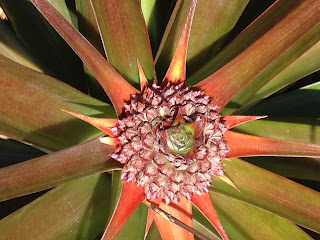I've recently done a course on Future Learn about the life and times of Richard III so queens have been on my mind, given how important they were to medieval monarchs. I felt quite sorry for some of them, married off - often as children - to a man they didn't know. Then, of course, they had to do their duty and produce at least one heir - and more spares if at all possible. After that a few daughters to be advantageously married and make desirable alliances was also a good thing. It must have been quite horrific sometimes as they were sent to a court where they knew no-one and where conspiracy and political machinations were rife, and to a husband who may have found her unattractive or, equally possibly, may have been unattractive to her. That's without even falling foul of different court customs - one poor queen arrived at the English court dressed in the height of fashion for her homeland and was criticised for showing too much cleavage.
But before you are too sorry for all of these royal women, not all were put upon and many wielded considerable power behind the scenes - and they didn't have to be queens to do that. Around the time of Richard III and Henry VII English royal women were deeply involved in the politics of the time.
Just a few examples:
Jacquetta of Luxembourg was married to first to John of Lancaster, Duke of Bedford, aged 17, then, when she was widowed, remarried - in a scandal because she married in secret without the king's permission or anyone else's presumably-
Sir Richard Woodville (later Earl Rivers) who began as a Lancastrian supporter but who later supported the Yorkist king, Edward IV. Her oldest daughter,
Elizabeth Woodville, was a young widow with two small children when she married Edward VI secretly - seems to be a family tradition, doesn't it - and there were strong suspicions that Jacquetta had some part in this. It seems to have been a happy marriage and Elizabeth, now Queen Consort, had considerable influence at court until the death of her husband leaving the future Richard III as Lord Protector of her young sons.
This all fell apart when it was alleged that Edward had previously been secretly betrothed to Lady Eleanor Butler- a betrothal was considered as binding as a marriage and meant any later marriage was not legal - and the Bishop of Bath and Wells, Robert Stillington, was reported as claiming he had conducted the ceremony. If this was true, this meant Elizabeth's sons with Edward were not legitimate and could not inherit the throne. Well, as we all know, Richard then became king. Whether Elizabeth then aligned herself with another powerful woman,
Margaret Beaufort, Countess of Richmond, and the mother of Henry Tudor, soon to become Henry VII, as seems likely or whether she merely acquiesced in it, her eldest daughter, Elizabeth of York then married the newly crowned Henry VII - who is just as likely to have had her brothers murdered as her uncle, Richard was. They were certainly brutal times.
When you look at all this, it's hardly surprising with this ancestry that Elizabeth I was such a strong and savvy ruler. She came from a long line of intelligent and politically motivated women who must have influenced her at least as much as her male ancestors.
![]()



